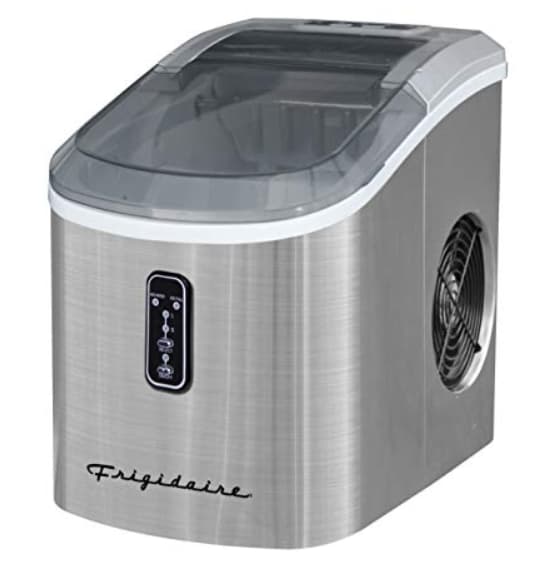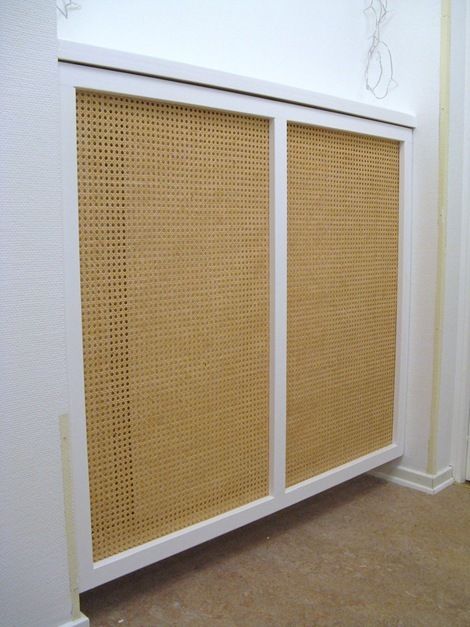Facing issues with your Frigidaire ice maker? Whether it’s refusing to make ice or persistently indicating it’s full, don’t fret.
Frigidaire Ice Maker Not Working

We have broken down the troubleshooting process into easy-to-follow steps to get your ice maker up and running.
Why Isn’t My Frigidaire Ice Maker Producing Ice?
Several factors could hinder your ice maker’s performance. Let’s explore:
- Power Supply Concerns: Ensure the power cord and outlet are functioning and free from defects.
- Low Water Reservoir: Your ice maker won’t produce ice without water. Check the reservoir level and refill if necessary.
- Blocked Water Supply/Filter: Over time, mineral build-up and debris can clog your water line. Regular cleaning is essential.
- Ice in the Supply Line: Occasionally, ice might block the water supply. If this happens, unplug the machine and let it thaw.
- Full Ice Basket: Some units halt ice production when their basket is full. Regularly empty it to ensure continuous production.
- Cleaning Mode: If your ice maker is self-cleaning, ensure it’s not in cleaning mode, as this stops ice production.
Persistent ‘Add Water’ Light Issues
If your ice maker constantly signals to add water, inspect the water sensor for debris. A sensitive sensor might misread low mineral content in the water, falsely triggering the light.
Dealing with Leaks
Experiencing water leaks? Here’s a breakdown of common causes:
- Water Inlet Valve: Ensure attachments are securely fastened. If they’re intact, a crack in the valve might be the culprit. Consider a replacement.
- Faulty Water Filter: Double-check your filter for damage. An incorrect installation or an incompatible filter can also lead to leaks.
Ice Maker Claims It’s Full – When It’s Not!
Is the ‘Ice Full’ light glaring at you even with an empty basket?
- Firstly, access the interior of your ice maker.
- Inspect and clear any debris.
- Test the slide-way function by rotating it.
- Recheck after 2 hours.
- Frost accumulation or a malfunctioning magnet might be at play. Ensure the magnet properly contacts the panel to deactivate the ‘Ice Full’ indicator.
Resetting Your Frigidaire Ice Maker: 6 Steps
- Hold the power button for 10 seconds.
- Unplug the ice maker.
- Drain the water reservoir (if filled).
- Empty the ice basket.
- After a 30-minute pause, reconnect the power.
- Refill the water and assess the machine.
The Art of Making Ice
Ever wondered how those refreshing cubes came into existence? Well, here’s a brief run-through:
- The machine draws water from its reservoir, filling a designated tray.
- This water undergoes a chilling process until it solidifies.
- Once formed, the cubes are pushed into the collection basket, and the cycle starts anew.
- Grasping this basic mechanism can be the key to spotting and rectifying common problems.
Potential Speed Bumps in Ice Creation
- Feeling the Heat: If your surroundings are too toasty, it could play spoilsport. For best results, position your ice maker in a relatively cool area, shielded from direct heat or sunlight.
- The Air Trap: Occasionally, air bubbles can disrupt the flow, resulting in imperfect ice. Running a couple of cycles usually resolves this glitch.
Quality is Key
- Crystal Clear Choice: For pristine, tasty ice, the water quality can’t be overlooked. Filtered water often gives the best results, preventing any unpleasant taste or murky appearance.
- Clean Machine: Over time, unwanted residues might settle inside. Hence, periodic cleaning is essential. A vinegar and water concoction can work wonders in keeping the interiors sparkling and scale-free.
When to Ring the Expert Bell?
DIY troubleshooting is great, but there are times when a professional touch is warranted:
- Uninvited Noises: Should your ice maker start crooning unfamiliar tunes, it could hint at a mechanical hiccup.
- Dwindling Output: If, despite your best efforts, the machine is stingy with ice, some internal parts might be on the fritz.
- Persistent Puddles: An occasional leak is manageable. But if your machine turns into a mini fountain too often, deeper issues might be at play.
Prolonging Your Ice Maker’s Prime
- Guard Against Surges: Safeguard your ice maker against electrical surges with a surge protector. This small step could notably lengthen its lifespan.
- Replace to Rejuvenate: Components like the water filter or inlet valve can wear over time. Timely replacements ensure the machine doesn’t overexert and lasts longer.
Understanding Ice Types and Their Impact
Different ice makers produce various types of ice, each with its unique characteristics:
- Nugget Ice: Soft and chewable, this ice is perfect for cocktails and soft drinks.
- Cube Ice: The most common type, it’s versatile and suitable for a broad range of beverages.
- Flake Ice: Thin and soft, it’s excellent for presentation, especially in seafood displays.
- By recognizing the kind of ice your machine is designed to produce, you can better assess its performance and address issues that may arise.
Energy Efficiency and Your Ice Maker
Modern ice makers are more than just functional; they’re eco-friendly:
- Green Machines: Many of today’s models prioritize energy efficiency, helping you save on electricity bills and reduce your carbon footprint.
- Water Conservation: Advanced ice makers are designed to use less water per cube, preserving our planet’s precious resources.
Accessorize for Efficiency
- External Filters: While many ice makers come with built-in filters, adding an external water filter can further improve ice quality and taste.
- Insulated Bins: These ensure that the ice remains frozen for longer periods, reducing the frequency of ice-making cycles and saving energy.
Regular Check-Ups
Much like a car, periodic professional inspections can keep your ice maker in peak condition:
- Yearly Inspections: Having a technician examine the machine annually can help identify potential issues before they become significant problems.
- Warranty and Services: Ensure you’re aware of the warranty terms. Some manufacturers offer extended services that include regular check-ups.
User Habits Matter
- Avoid Overfilling: Consistently maxing out the machine’s capacity can lead to wear and tear over time.
- Handle with Care: Gentle handling, especially when removing ice or cleaning trays, can prolong the machine’s life.
More Related Guides:
- How to Power Cycle Wyze Camera
- Ring Doorbell Not Ringing Inside
- How to Reset Schlage Keypad Lock without Programming Code
- Haier Washing Machine Reset Button
In Conclusion:
If your Frigidaire ice maker is acting up, a simple reset might be the solution. However, if our tips don’t rectify the issue, it’s best to consult a professional.
Always remember, if your product is under warranty or within a return window, seeking a replacement might be an option. Stay cool and enjoy your ice!
Your ice maker, just like any appliance, demands a bit of TLC. It’s a sturdy device, meant to add a cool touch to your beverages for many seasons.
Should you ever find yourself in a chilly predicament, remember: a reliable technician or the manufacturer’s support team is just a call away. Here’s to countless glasses brimming with ice and joy! Cheers!


